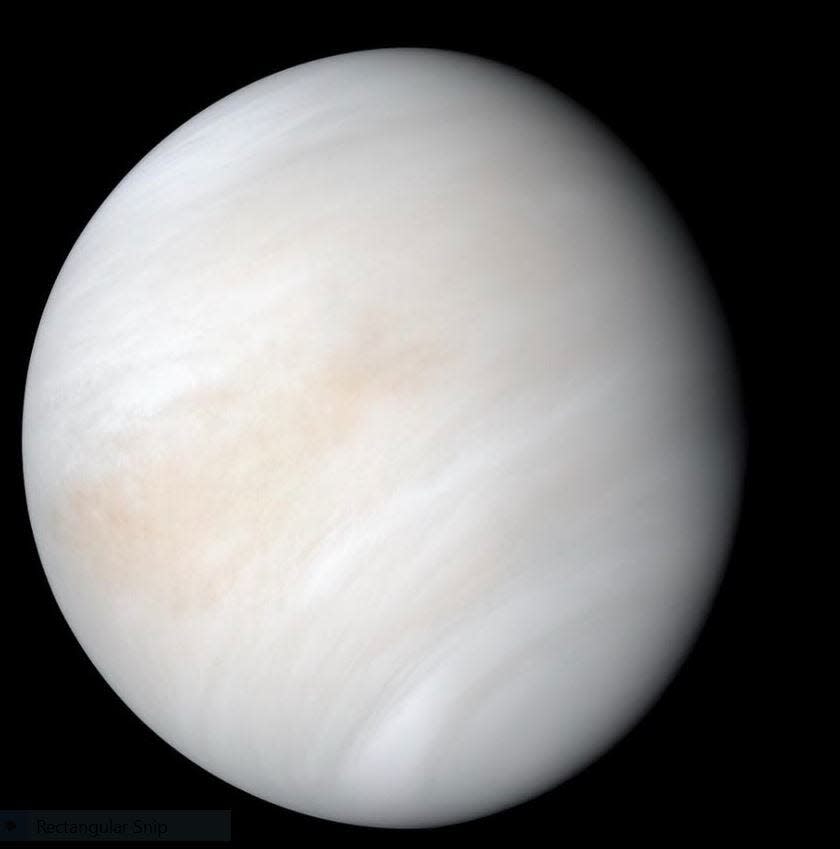Gas detections on Venus raise questions of possibility of life

In late 2020, a group of scientists led by Jane Greaves at Cardiff University in Wales in the United Kingdom reported finding the gas phosphine (PH3) in the clouds of Venus. This surprised many scientists. On Earth, phosphine has two known sources: a product of microbial decay of organic material or produced in a lab. The surface of Venus bakes at nearly 900 F. Thick clouds of sulfuric acid surround the planet. Scientists believe such conditions completely precluded the possibility of life on Venus.
Scientists argued that the discovery must be a mistake, and other researchers who looked for phosphine in Venus’ clouds could not immediately reproduce the discovery. A March, 2021 study by Rakesh Mogul of Cal Poly Pomona did find phosphine there.
Still, the controversy raged among scientists. Even if phosphine did occur in the clouds of Venus, detractors said, there must be a geochemical process that creates it that did not involve living organisms.
Some scientists claim that volcanoes might be a source of phosphine on Venus, which is known to have active volcanoes. Sulfur dioxide in the clouds of Venus comes from volcanoes, but as Greaves says, “The amount of phosphine doesn’t change that much across the various observations. As a comparison, sulfur dioxide, which is believed to be related to volcanism on Venus, can vary wildly, more than 10 times from year to year, or even shorter timescales.”
By comparison, the phosphine varies only by a factor or two.
“It is not really variable, and I think that’s important in the context of interpretations,” Greaves said.
She added that the observations came from multiple telescopes, making the observations more robust. As Greaves said, “We now have five detections over the last few years, from three different sets of instruments, and from many methods of processing the data. We’re getting a clue here that there is some steady source (of phosphine).”
As compelling as these observations are, there is still doubt in the minds of many scientists. Follow-up studies are needed, but finding even microbial life elsewhere would be a huge discovery.
Moon and star cluster show
If you are up by 5:30 a.m. Aug. 9, go outside and find the third quarter moon in the east. Just to the north of it lies the Pleiades star cluster, often called the Seven Sisters. It is easily visible to the unaided eye. The moon and the star cluster make a great sight, even better in a pair of binoculars.
The night of Aug. 12-13 marks the peak of the Perseid meteor shower. One of the most active annual showers, it can deliver more than 60 meteors per hour. Get away from city lights for an even better view. The best time to view occurs from midnight until 5 a.m.
Planet Visibility Report
August begins with Mercury and Mars in the evening twilight. Venus is also up after sunset early in the month, but is much closer to the horizon and therefore blocked by any trees or buildings. Saturn rises around 9:30 p.m. with Jupiter creeping into the night sky shortly after midnight.
Mercury slides towards the sun and becomes tough to find in the twilight glow by mid-month. By then, Venus has shifted to the morning sky. Saturn rises slightly earlier each night and by the end of August Jupiter is up before midnight. New moon occurs on Aug. 16, with a second full moon, the Blue Moon, on Aug. 30.
This article originally appeared on Oklahoman: Questionable phosphine detections on Venus become more solid

